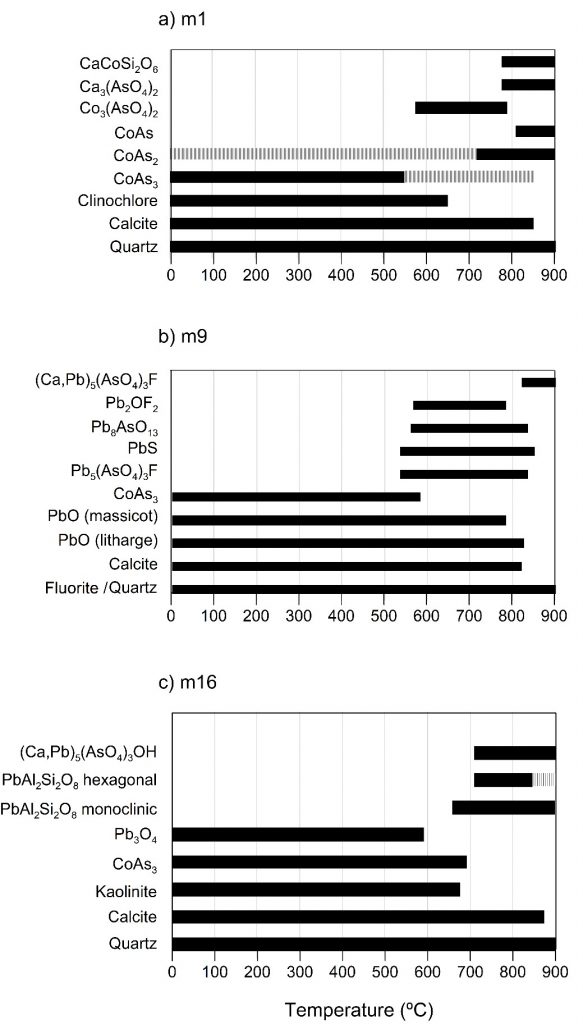Judit Molera has published a new experimental work with data obtained on HT-XRD Synchrotron (ALBA MSPD BeamLine).
Cobalt was used since the early antiquity to tinge glass and glazes in blue. The presence of arsenic in blue decorated glazes since ~1500 onwards and absence beforehand, observed in Europe, might be related to the processing of the ore: roasting of the cobalt mineral (saffre) and obtaining a glass adding sand and potash (smalt) or as by-product of other metallurgical processes, e.g. silver smelting slag. We have replicated the roasting of cobalt arsenide ore (CoAs3) and the processing of silver smelting as described in historical treatises following the transformations by in situ variable temperature SR-XRD, PIXE and SEM. Our laboratory tests have proved that roasting cobalt arsenide ore either alone or mixed with fluxes (PbO, CaF2), CaCO3, SiO2 and kaolinite was unable to remove the arsenic completely. Roasting cobalt arsenide ore (saffre) alone explains the presence of arsenic in the cobalt blue glasses and glazes after 1520. The product obtained as described by Agricola contains less arsenic forming calcium arsenates, lead arsenates (Pb5(AsO4)3F, Pb8As2O13) and calcium lead arsenates (Ca,Pb)5(AsO4)3(F,Cl,OH) with an hedyphane structure, while cobalt is incorporated into a glassy matrix. As the physical separation of the arsenic free cobalt vitreous phase does not seem possible, these processes can explain the variable content of arsenic shown by the historical blue glazes but not the arsenic free glazes. In this case, the use of an arsenic free cobalt ore such as linnaeite is the most likely source.
Molera, J., Climent-Font, A., Garcia, G., Pradell, T., Vallcorba, O., & Zucchiatti, A. (2021). Experimental study of historical processing of cobalt arsenide ore for colouring glazes (15-16th century Europe). Journal of Archaeological Science: Reports, 36. https://doi.org/10.1016/j.jasrep.2021.102797
Keywords: skutterudite, cobalt, arsenic, blue glazes, calcium lead arsenate, roasting CoAs3, saffre
* Corresponding author
Judit Molera


Leave a Reply